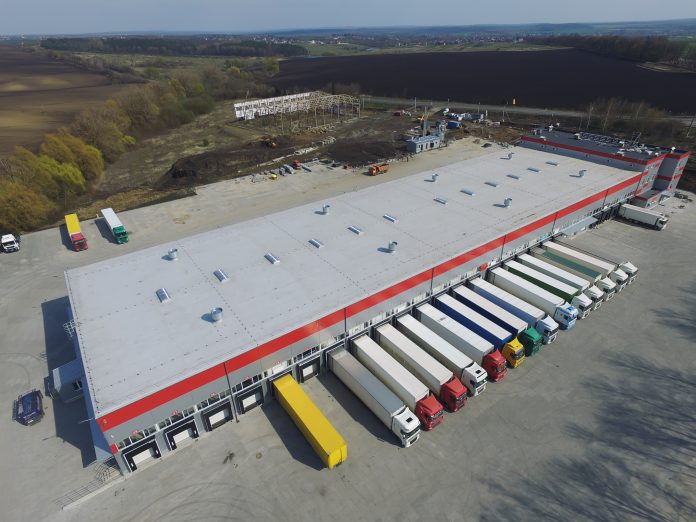Tom Jansons, development manager of Jansons Property, discusses the issues surrounding the industrial and logistics real estate sector, and the swelling need for industrial land across the South East
2021 saw an industry first with a record take-up of warehouse space significantly shifting the hierarchy of the real estate sector’s highest performing sectors, which in more recent times have been food stores and housing. However, the continued success of the industrial and logistics sector has overtaken the amount of land available for it, causing an industry crisis with unprecedented levels of rent for employment industrial land all over the UK.
This increase in rents and sharpening yields has meant average land value growth across the UK has skyrocketed, as we saw an annual increase of over 60% in January of this year in some areas. Investors are competing for sites and speculative space is being let fast. In the South East, for example, we have seen rents in Wycombe increase 60% recently from £10 per square foot a couple of years ago to £16 per square foot now being quoted. Land values have driven upwards also to unprecedented levels with another example, where investors are paying north of £10m per acre for industrial land in Park Royal.

Digital transformations are driving the growth of the industrial land sector
As the industrial sector thrives, spurred on by forced digital transformations resulting from the pandemic, additional space for required logistics will be needed to meet the fast-growing customer demand. The British Property Federation’s 2019 warehousing report found that there is a current requirement of 69 square foot of warehousing floorspace for every home in England, meaning that (with the government’s target of delivering 300,000 new homes each year) an insurmountable 21m square foot of land will be required for industrial space each year.
This whopping demand for land has created a landlord-favourable supply/demand imbalance, driving rents through the roof, which only adds to the inflationary pressures currently being experienced in the UK.
The British Property Federation and Savills also released a recent Industrial Committee Report for 2022: Levelling Up: The Logic of Logistics. It found that the UK planning system is restricting growth by not allocating enough land, despite the huge amount of growth in this sector in recent years.

Demand for space will continue to drive prices and rents
In 2006, only 3% of retail spending was online; this has grown to 26% today and is predicted to rise to 37% by 2025. Considering that e-commerce requires more than three times more logistics space than traditional brick-and-mortar stores, this vast growth has had significant implications on demand for logistics space. And with this level of growth, investor appetite is strong and increasing for prime industrial assets, meaning this unrelenting demand for space and limited development land available will continue to drive up both prices and rents. This sector accounted for nearly 30% of investment volumes for the first half of 2021, according to the Colliers Real Estate Investment Forecast for Q3 2021.
In response to this, there is a clear and growing need for local authorities to factor in adequate amounts of land to account for such a mounting demand. Industrial and logistics facilities also generate significant benefits and are key to the national infrastructure in supporting important and growing sectors of a strong economy – including providing diverse and high salary skills-based jobs. This means there are evident economic benefits in allowing and facilitating further growth for this sector.
With that being said, releasing land – particularly when talking about greenbelt or AONB (areas of outstanding natural beauty) land – can be a controversial and politically sensitive subject. There are also concerns that allocating land in close proximity to residential dwellings will devalue the housing as typically, warehouses and industrial land are viewed as being unattractive and negatively impacting the environment and surrounding air quality.
It is no secret that carbon is involved in every stage of the property lifecycle and is arguably unavoidable, with embodied, operational and end of life carbon. However, industrial and logistics developers are increasingly adopting WELL Building Standards and we are seeing growing social value credentials for the sector which adopt a more environmental and human-centric approach to design.
One example of warehousing designed with social values in mind is the Magna Park site in Milton Keynes. These buildings are widely acclaimed within the industry for setting new standards in terms of environmental management, sustainability and job creation. Noted mostly for their blue gradient buildings that blend in with the sky, making them immensely more attractive than stereotypical warehouses. Incorporating features like south-facing offices for attractive views; break out and relaxation spaces; health and childcare facilities; natural spaces for increased biodiversity; sports facilities; outdoor amenity areas are becoming more commonplace in warehouse design.
Many are also adopting a number of solutions that improve the environmental performance of buildings – reducing energy demand and improving supply. These factors are making industrial development more attractive and less impactful to the surrounding area in hopes to secure more land opportunities for the huge amount of demand.
Ultimately, we are nearing a crisis for this sector as demand soars and will likely continue to. What is vital here is a more adequate response to sector needs on a government level. Local authorities now need to consider the need for employment and industrial land in proportion to the residential land they include in their plans. Whether it’s a revision of the current planning system to become more agile, deciding to release greenbelt land or creating an incentive for councils to act, some intervention is sorely needed.

Tom Jansons
Development manager
Tel: +44 (0) 1494 679977














